The newest zombie management game, Undead Labs’ State of Decay 2, gives you the opportunity to act as a community leader of a small group of survivors attempting to make it in the apocalypse.
You start your game by choosing one of three different town options, each roughly the size of that from the first game. When you set up your first base, you immediately learn about the blood plague zombies. These zombies are more aggressive than normal ones found in the first game, and if the zombies do enough damage to a community member, he or she can receive the blood plague.
A character with the blood plague needs a serum soon or else they turn. You need to get samples from blood plague zombies to cure them, but you’ll find this an easy enough task. I never felt any pressure when a character contracted the blood plague as the cure was never out of reach.
The primary goal of your community is to rid your entire town of the blood plague zombie’s nest, plague hearts. Like the first game, there’s no overarching story line; instead, you move from town to town destroying these plague hearts and attempting to survive. You’ll find that small events happen throughout the game, but nothing substantial really opens outside of side quests.
Same Ol’ Zombies
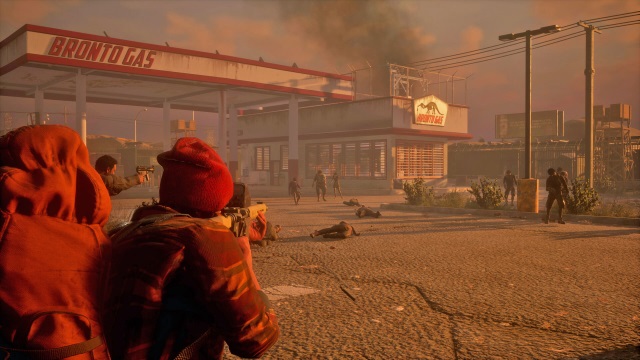
Other than the blood plague zombies, no new enemies get added to the experience. You have all the special zombies from the first game: your agile feral, your lumbering juggernauts, the loud screamers, and your poisonous bloaters. Naturally, the entire map is covered in rank-and-file zombies you cut down left and right — however, they remain a force to fear in great number.
Because of how easy it was to handle the blood plague, it felt like the only new addition to the zombie roster was a bust.
Inventory Management
You’ll spend most of your time in the game away from your base, searching abandoned structures for crucial resources. You’re on the hunt for five different supplies: food, medicine, ammo, building materials, and fuel. Your community drains these supplies every day, and if one of these resources gets too low, your community members start to feel the pressure, and your group’s overall morale declines.
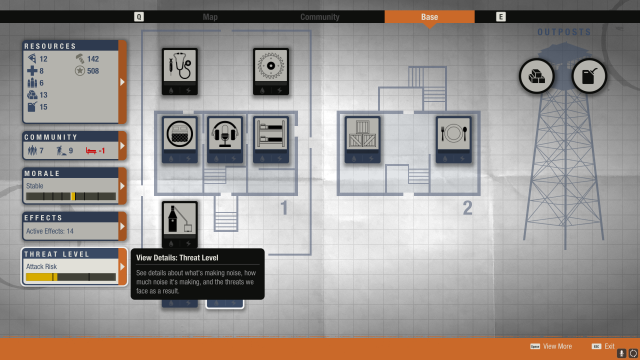
Random events crop up at your base all the time while you’re away. These events vary from someone clumsily spilling over a gas can to a zombie siege. The events don’t force you to run home to see what you can do; instead, they’re an additional drain on your ever-dwindling resources.
Though these events were an attempt to make your group feel authentic and real, they leaned closer to being bothersome. These events were structured to serve as the developer’s invisible hand, moving in on you to press down on all of your panic buttons and force supplies even further than they already were.
Vehicle Sickness
Much like in the first State of Decay, you need a vehicle to drive around, and you definitely need the additional trunk space. Having six to eight more slots to use for inventory made vehicles feel like a vital resource to take with you whenever you went out on a supply run.
However, the vehicles in State of Decay 2 became a frustrating mechanic I found myself constantly annoyed with. The cars have a fuel gauge you have to watch, and this meter drops fast.
I found myself with nearly a full tank at the start of a run and lost almost all of it when I traveled to another part of the map. I cannot count how many times I got stranded on one side of the map with a tired, nearly dead community member, who I then had to use to loot any surrounding buildings to locate a container of gas. Walking that distance is not an option.
On top of that, the vehicles were full of glitches. There were times I would bash the front of the car up against a railing or a fence and it would get stuck on the environment, or I would go flying in the opposite direction. I’ve nearly lost a handful of community members, and all of their supplies, to my vehicle getting destroyed because it glitched out.
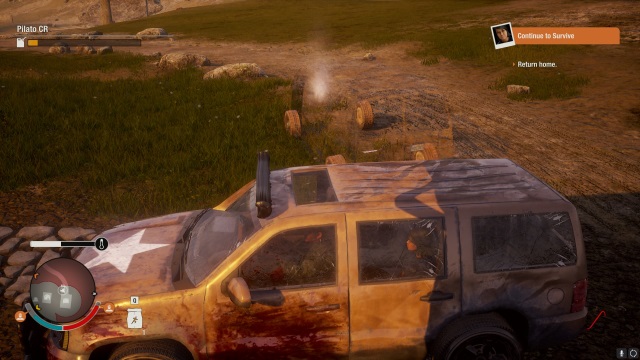
Despite these troublesome glitches, vehicles were still better than in the first game. In the first one, you could kill about two dozen zombies with your bumper before the hood would start smoking. I had run over so many zombies with my vehicle in this one I thought they were indestructible. This turned any vehicle I drove into the ideal zombie-killing weapon.
Community Survival
Though your main goal is to rid the town of these plague hearts, your main, consistent objective is to survive with your community. And you’ll find this no easy task as you get to know your community members and learn about their preferences.
The survivors that make up your small community turn out to be the stars of the game. The first State of Decay had a small trait list with random facts about the characters, like they were a tour guide or they’re really good at television trivia. State of Decay 2 doubles down on this but openly breaks down how these traits affect the community as a whole and what passives they provide the community member.
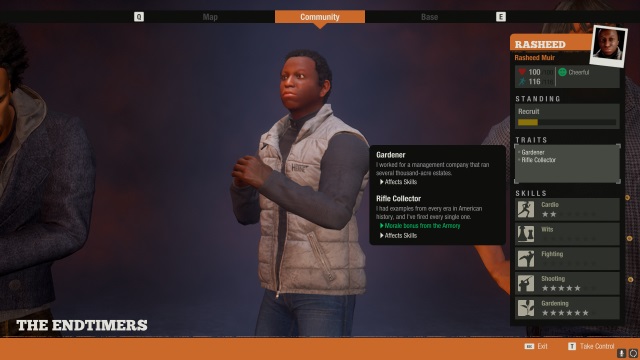
These traits also provide incentives for you to decide what you should build in your base to improve your community. I found myself constantly referring to the community page to see what sorts of skills and passives my group had.
When I saw one of my community members had the “gardener” trait, I got to work quickly to give them a tiny plot in which to work their magic. Not only did the garden plot give my group an overall morale boost, but the community member, Chili, was able to optimize this location and provide more food than the addition already gave. One less supply to worry about on my travels.
Early on, I decided I wanted to streamline a particular community member to act as my leader. Her name was Tweak, an energetic chemistry major who played paintball in her free time, and I felt she was going to be a positive driving force for our community to look to for support. Turns out this plucky chemistry major was a dictator in training because she had the Warlord legacy personality.
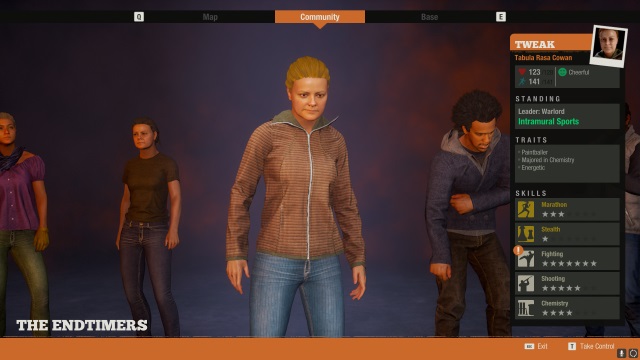
Each community member comes with their own legacy personality, either the Warlord, Sheriff, Builder, or Trader. The personality trait provides the member with a moral compass on how they prefer to have their community run. Additionally, when you move over to the next map, this personality trait adds a starting bonus to your starting home.
Tweak turned into a little tyrant and ruled our town with an iron fist. She enjoyed the power she rightfully won.
A Thriving Environment
As you explore the game, you’ll run into a number of NPC communities also trying to survive. Periodically these groups make calls for help over the radio, asking you to help them with a zombie infestation near their base or asking if you can help them locate a specific supply they’re running low on.

You can handle these NPC communities however you like. If they become friendly enough towards you, you can receive discounts on trading with them and stock up on any supplies you’re lacking. If they like you enough, you can ask if members want to join up with you.
Unlike the first game, State of Decay 2 gives them a lot more depth and personality. I felt more willing to go out of my way to help them out and give them assistance, if I could.
When I missed opportunities, I felt bad; however, this system weighed me down. While I was getting yelled at by the NPCs, I was meeting my group’s needs and helping them out. I was conflicted about how this system worked, but in the end, it was a good addition. If anything, this system provided me with more tasks to do rather than raiding abandoned homes or clearing out zombies.
While you normally start out neutral to these parties, Tweak wasn’t too keen on letting them move in for free. If she found out about a group, she wanted them out of her town or to have them join up with her survivors — there was no middle ground.
Anyone who was against this idea didn’t last long.
Multiplayer?
This installment also introduced the concept of multiplayer. A host could invite up to three other friends to their game to help them survive. The mode feels more helpful for the host as any supplies gathered during these sessions went to them, and the guests only received a small portion of what they grabbed.
However, I can’t talk too much about this new mode as any session I attempted to play ended in failure. My friends could never connect to me, nor could I connect to them. We never got to experience this portion of the game.
This may have been a favor to us as many players have reported a number of bugs and problems, from guests being unable to access a host’s base facilities to being unable to open up a passenger door while driving around.
Plagued With Bugs
Throughout my journey I ran into a number of different glitches and problems with the gameplay. Sometimes my character would get stuck on a rock, or I’d look behind me to see how my follower was doing, and they’d be invisible. Unlike other players, I hadn’t run into any game-breaking bugs or infinite loading screens that many have reported dealing with.
Until the last hour of my game.
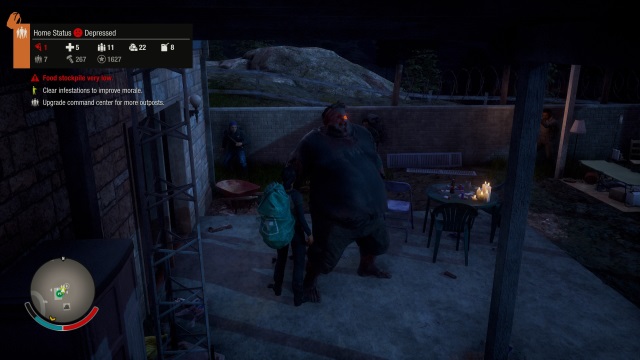
I had corralled a juggernaut into my camp to take him out with all of my community members. The thing would not die.
The battle between my community and the juggernaut lasted 10 minutes. I had used up all of my ammo, half of my melee weapons, and let it kill two of community members before I relaunched my game. When I loaded back in, the juggernaut was gone, but the damage was done and the end of my playthrough was soured, knowing how far back the invincible zombie had sent my group. My positive morale was in the trash, along with a great number of my resources.
At the End of the Day
For anyone searching for a repetitive base-management game, State of Decay 2 scratches that itch by forcing you to constantly take care of your group and see to all of their problems and needs. For some, the repetition will grow stale. When you beat one of the three available maps, you’re forced to move to one of the other areas, where you have to start all over again, repeating the same process there. You’ll face all the same problems: low resources, NPC communities to see to, and all-new plague hearts to destroy.
Other than the new quality-of-life mechanics and new descriptions added to make it easier to know what to do, it feels like a lot of the same.

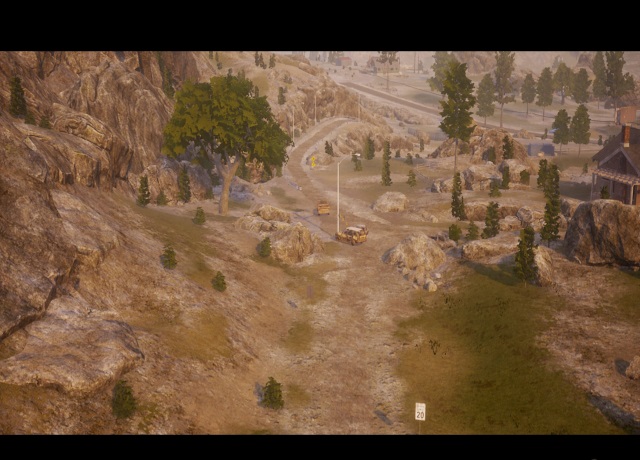





Published: May 25, 2018 06:05 pm